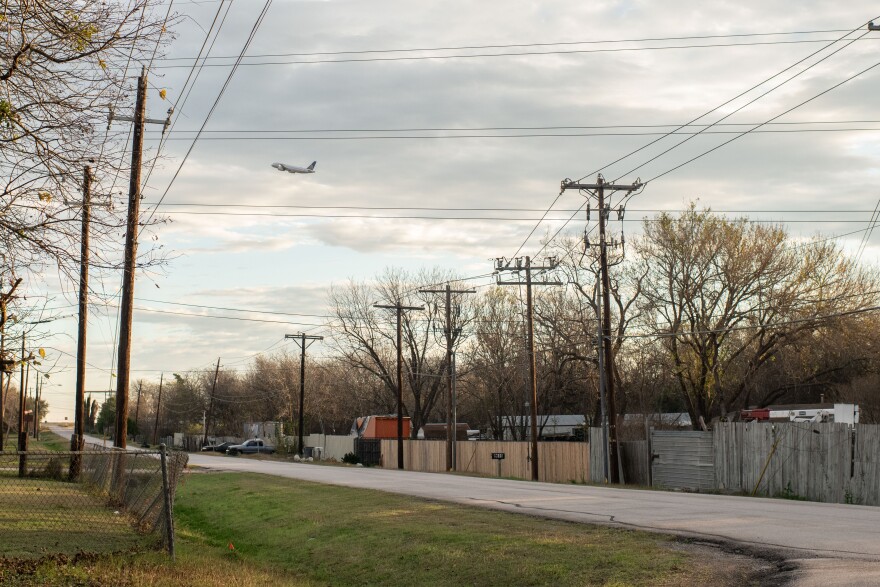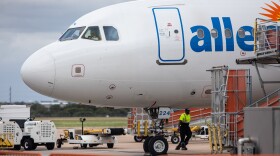Austin's City Council narrowly blocked an effort to stop a massive new fuel storage facility from being built at Austin-Bergstrom International Airport. The facility will store up to 6 million gallons of jet fuel a few hundred feet from homes.
"Our hearts are heavy, because this isn't the outcome that we wanted," said City Council Member Vanessa Fuentes, who spearheaded an effort to find a new site in response to concerns from her constituents who live next to the airport.
The vote was 5-5, with Kathie Tovo, Sabino "Pio" Renteria, Jose "Chito" Vela and Ann Kitchen supporting the resolution. Natasha Harper-Madison was not present.
ABIA officials argue the new storage facility is sorely needed to accommodate what they say is the fastest-growing airport in the country in terms of scheduled flights.
Airport CEO Jacqueline Yaft said delaying the project would harm ABIA operations by forcing more planes to "tanker in" extra fuel, raising airline costs and potentially ticket prices.
"The higher risk for the longer [term] is basically losing those flights," she said. "The airlines would decide to wait till we either add the capacity or [airlines could] choose to go to a different airport."
Yaft said without the additional fuel capacity, no new flights could be added after 2023, choking the airport's growth when the facility is seeing record-demand as a vital transportation hub in one of the fastest-growing regions of the country.
But nearby residents and environmental activists pleaded with the City Council to relocate the tank farm, saying they feared the risk of toxic fumes, dangerous fires or deadly explosions.
The first phase of the project, expected to be complete in less than two years, would install two 1.5 million gallon tanks as close as 640 feet from the nearest home on McCall Lane. The project's second phase, planned for at least 10 years from now, would add two more 1.5 million gallon tanks with the closest being 488 feet from the nearest resident.

"Our community is a community of color," said Blythe Randolph, who bought her first home in the Colorado Springs neighborhood less than a mile from the proposed fuel storage site. "This is an issue of environmental equity, racial equity and health equity, and I urge you all to consider that when you vote."
"It's very, very important that we not continue this legacy of racism, that we address this issue, that we relocate the tank farm," said Susana Almanza with the environmental justice group PODER.
Airport officials insist their fuel storage facility poses minimal risks. The tanks will include state-of-the-art safety technology, undergo regular inspections and be monitored 24/7.
The Austin Fire Department's battalion chief at the airport, Greg Pope, who's also a licensed private pilot, said storing Jet-A fuel was "not as concerning" to him as conventional aviation gasoline, because it's less volatile.
The tanks include lightning protection and internal systems to extinguish any fire automatically. If those systems fail, firefighters would have to put out the flames with foam.
Pope said AFD trucks at the airport can produce up to 42,000 gallons of foam, which he said would likely be more than enough to put out any fire. Additional foam, if needed, could be brought in from fire departments elsewhere in the city or neighboring jurisdictions, he said.

"As for the houses in close proximity, with the 51 fire stations here in the city of Austin ... we would have the area covered more times over than we would need [in there's a fire]," Pope told the City Council this week.
Those firefighting capabilities were small comfort for skeptical opponents of the jet fuel storage facility. They pointed to decades of official assertions that industrial facilities near homes were safe before history proved otherwise.
"There's a history of environmental racism [in Austin], and my goal as a council member is to build back trust between this city and our Mexican-American community, our Black community, our Latino community," Council Member Vela said.
Fuentes' proposal would have forced the airport to consider alternate locations to store jet fuel. Airport officials said alternate sites didn't fit with ABIA's long-range plan to accommodate up to 31.3 million passengers by 2037.
Austin City Manager Spencer Cronk said the city would study the possibility of voluntary buyouts, following the urging of Mayor Steve Adler and members of the City Council.
Council members also talked about other proposals, including the addition of groundwater monitoring wells and third-party independent inspections of the jet fuel tank farm. The story facility will be run by a consortium of airlines operating under the name AUS Fuels.










